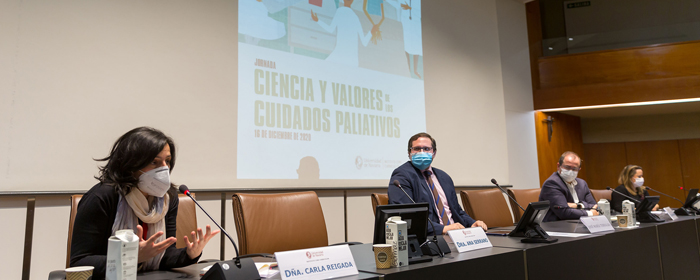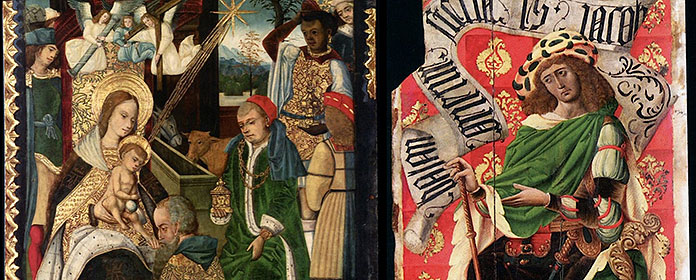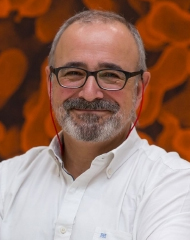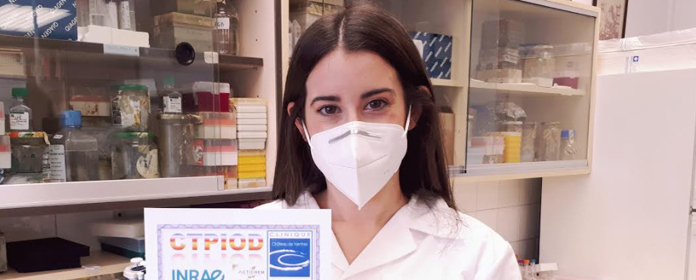Teodoro Durá, professor of the University of Navarra, publishes a book on childhood epilepsy
Fidel Gallinas Victoriano and María Eugenia Yoldi Petri participated as authors, together with the professor of the School de Medicina.
The Neuropediatrics team of the Hospital Virgen del Camino has published a book on childhood epilepsy that collects the work performed in the last 22 years in the Neuropediatrics Unit of this health center. According to one of the authors of the book, the professor of the School of Medicine Teodoro Durá, "this is the first time that this work is done in Spain". The monograph on childhood epilepsy has been published under the degree scroll "Focus on epilepsy in children", and its authors are Teodoro Durá Travé, Fidel Gallinas Victoriano and María Eugenia Yoldi Petri.
As Professor Durá explains, "the book basically brings together the experience accumulated in the diagnosis and treatment of children and adolescents with epilepsy. It is divided into eight chapters and has involved the participation of 1,163 patients".
Chapters
The first chapter (Febrile seizures and epilepsy) performs a long-term evolutionary analysis deadline of a group of children with febrile seizures, and concludes that the age of the first febrile seizure is a determining prognostic factor in the short term (risk of recurrences) and in the long term deadline (risk of epilepsy) in these patients.
The second chapter (Epilepsy in children: epileptic seizure types and epileptic syndromes) analyzes the epidemiological characteristics and relative distribution of the different types of epilepsies and epileptic syndromes in the pediatric population, and concludes that age seems to represent a determining factor in the clinical expression of the different types of childhood epilepsy, with the relative distribution of epileptic syndromes being different in each age group .
The third chapter (Incidence of epilepsies and epileptic syndromes in children) calculates the incidence and relative distribution of the different childhood epilepsies and epileptic syndromes in our environment, showing that the annual incidence of childhood epilepsy in Navarra (62.6 cases/100,000) is similar to that reported in various Western countries, with a peak incidence in the first year of life (95.3 cases/100,000) that gradually decreases until adolescence (48.7 cases/100,000).
The fourth chapter (Epilepsy during the first year of life) analyzes the epidemiological characteristics and relative distribution of the different types of epilepsy and epileptic syndromes during the first year of life, and concludes that most of the epilepsies occurring at this age are symptomatic and/or cryptogenic, and are accompanied by psychoneurological deterioration and/or therapeutic refractoriness, leading to cognitive disorders that require specialized psychopedagogical intervention.
The fifth chapter (Epilepsy and epileptic syndromes among primary school children) analyzes the epidemiological characteristics and relative distribution of the different types of epilepsies and epileptic syndromes occurring among pupils of Education Primary (aged 6 to 12 years), and it is concluded that most of the epilepsies occurring in this age range are of idiopathic etiology (benign focal epilepsies and/or absence epilepsies), have a favorable prognosis, and do not usually interfere with schooling and/or social adaptation of the patients.
In the sixth (Typical absence seizure: epidemiological and clinical characteristics and outcome), seventh (Panayiotopoulos syndrome: epidemiological and clinical characteristics and outcome) and eighth (Rolandic epilepsy: epidemiological and clinical characteristics and outcome) present and analyze the epidemiological, clinical and outcome characteristics of a group of patients with epilepsy-absences (infantile and juvenile), early-onset benign occipital epilepsy and rolandic epilepsy, respectively, with the aim of facilitating their diagnostic suspicion in the daily clinical internship .
According to Teodoro Durá, "the idea behind reflecting our experience in this book is to contribute, to the extent of our possibilities, to the knowledge of childhood epilepsy and, consequently, to improve the quality of life of our patients".




